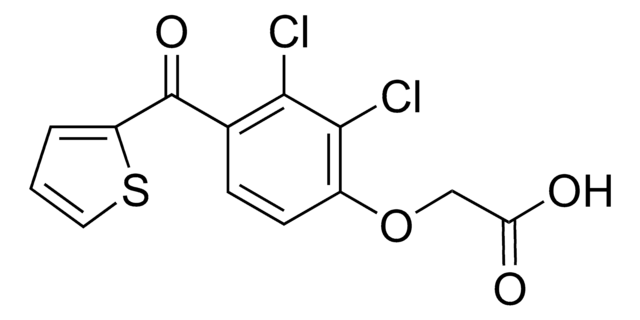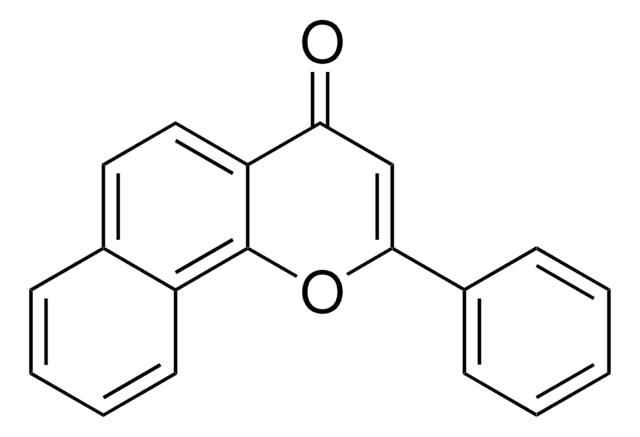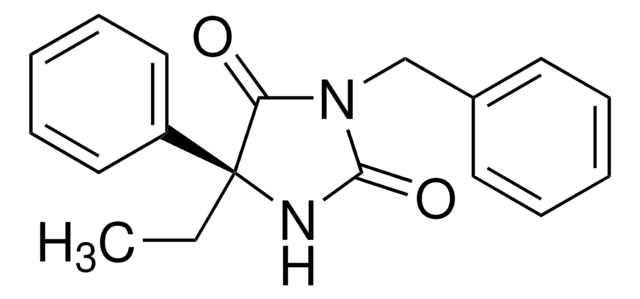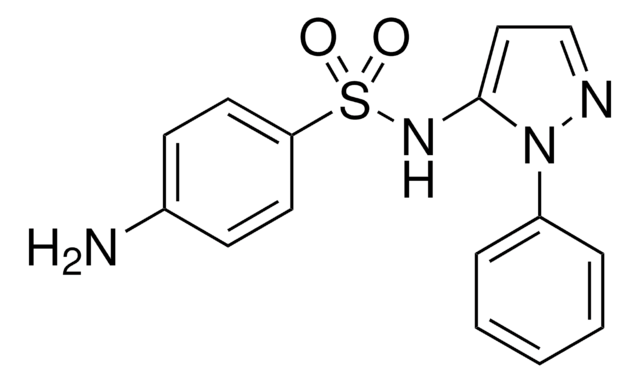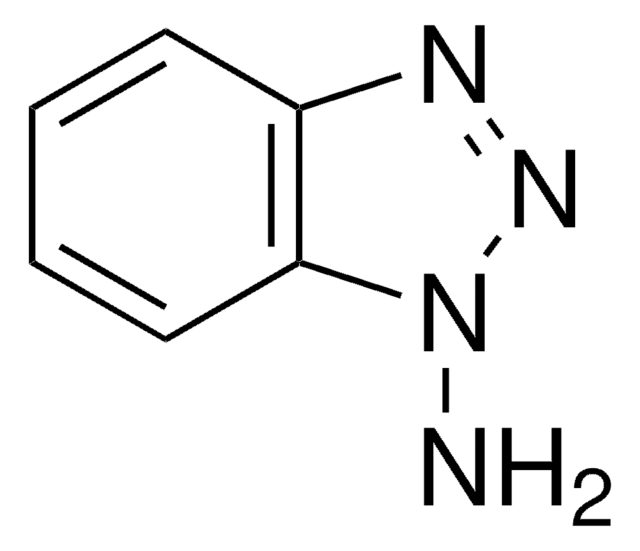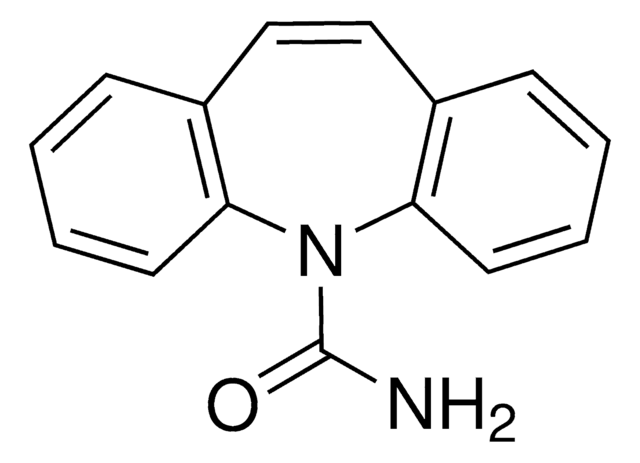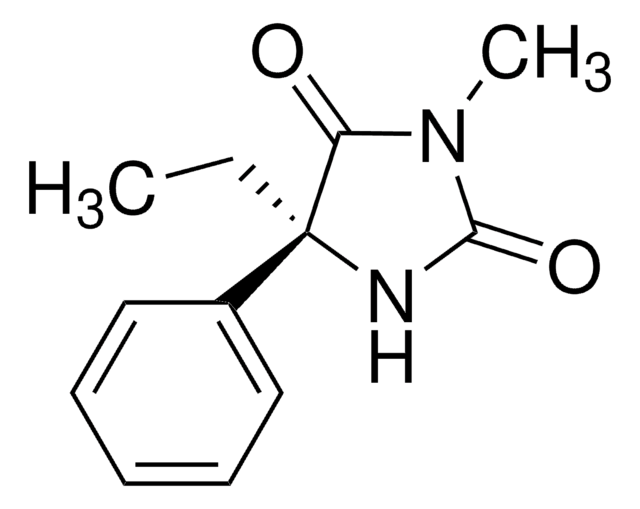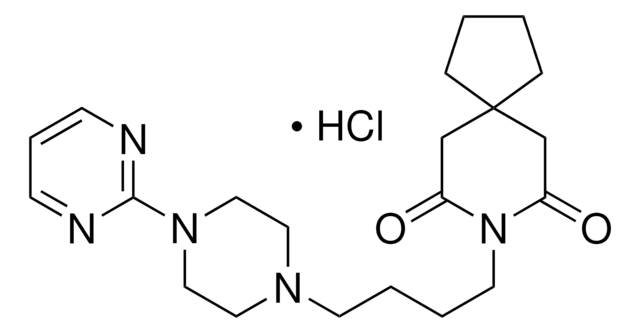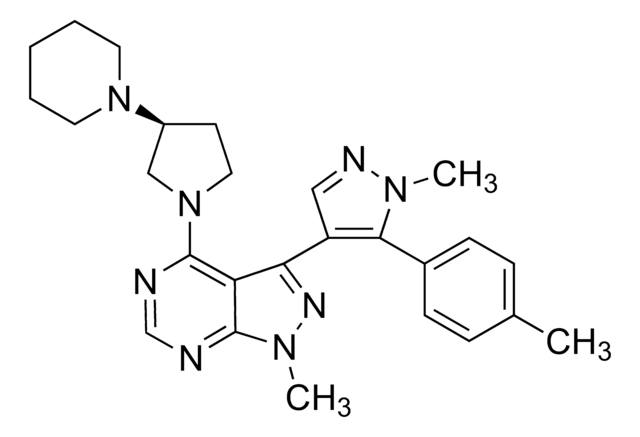Wichtige Dokumente
SML0485
Azamulin
≥98% (HPLC), powder, pleuromutilin antibiotic
Synonym(e):
(5-Amino-1H-1,2,4-triazol-3-yl)thio]acetic acid (3aS,4R,5S,6R,8R,9R,9aR,10R)-6-ethyldecahydro-5-hydroxy-4,6,9,10-tetramethyl-1-oxo-3a,9-propano-3aH-cyclopentacycloocten-8-yl ester;, 14-O-(5-(2-Amino1,3,4-triazolyl)thioacetyl)dihydromutilin, Antibiotic TDM 85-530
About This Item
Empfohlene Produkte
Produktbezeichnung
Azamulin, ≥98% (HPLC)
Qualitätsniveau
Assay
≥98% (HPLC)
Form
powder
Farbe
white to beige
Löslichkeit
DMSO: 10 mg/mL (clear solution)
Versandbedingung
wet ice
Lagertemp.
−20°C
SMILES String
CC[C@]1(C)C[C@@H](OC(=O)CSc2nnc(N)[nH]2)[C@]3(C)[C@H](C)CC[C@]4(CCC(=O)[C@@H]34)[C@@H](C)[C@@H]1O
InChI
1S/C24H38N4O4S/c1-6-22(4)11-16(32-17(30)12-33-21-26-20(25)27-28-21)23(5)13(2)7-9-24(14(3)19(22)31)10-8-15(29)18(23)24/h13-14,16,18-19,31H,6-12H2,1-5H3,(H3,25,26,27,28)/t13-,14+,16-,18+,19+,22-,23+,24+/m1/s1
InChIKey
FMHQJXGMLMSMLC-WBUYAQKGSA-N
Allgemeine Beschreibung
Anwendung
Biochem./physiol. Wirkung
Signalwort
Warning
H-Sätze
Gefahreneinstufungen
Eye Irrit. 2 - Skin Irrit. 2 - STOT SE 3
Zielorgane
Respiratory system
Lagerklassenschlüssel
11 - Combustible Solids
WGK
WGK 3
Flammpunkt (°F)
Not applicable
Flammpunkt (°C)
Not applicable
Hier finden Sie alle aktuellen Versionen:
Analysenzertifikate (COA)
Die passende Version wird nicht angezeigt?
Wenn Sie eine bestimmte Version benötigen, können Sie anhand der Lot- oder Chargennummer nach einem spezifischen Zertifikat suchen.
Besitzen Sie dieses Produkt bereits?
In der Dokumentenbibliothek finden Sie die Dokumentation zu den Produkten, die Sie kürzlich erworben haben.
Unser Team von Wissenschaftlern verfügt über Erfahrung in allen Forschungsbereichen einschließlich Life Science, Materialwissenschaften, chemischer Synthese, Chromatographie, Analytik und vielen mehr..
Setzen Sie sich mit dem technischen Dienst in Verbindung.